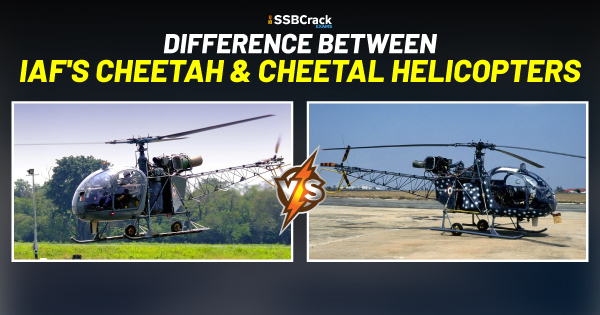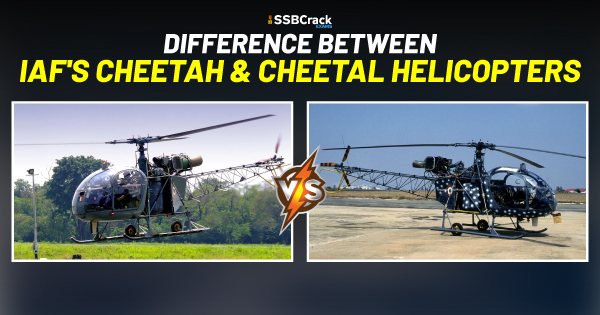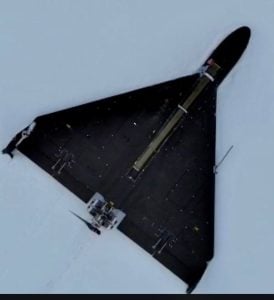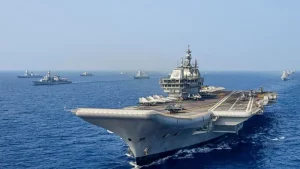French engineers created the single-engine Aérospatiale SA 315B Lama helicopter to satisfy the demanding operational conditions of the Indian Armed Forces. It combines the Alouette III parts and engine with the lighter Aérospatiale Alouette II airframe. The Lama performs exceptionally well at high altitudes.
The helicopters, known as the Cheetah, were made in India by Hindustan Aeronautics Limited (HAL) under licence. HAL later created the Cheetal, an improved model with a Turbomeca TM 333-2M2 engine. HAL also created an armed variant known as the Lancer.
HAL CHEETAH
1970, HAL and M/s SNIAS negotiated a licence deal for the Cheetah. In 1976–1977, the first Cheetah made from scratch was delivered.
The Cheetah Helicopter is a high performance helicopter that is identical to the LAMA SA 315B Helicopter of Eurocopter, France. It is built to operate in a variety of weight, centre of gravity, and altitude conditions. The five-seater Cheetah helicopter is tough, adaptable, and capable of serving a variety of purposes. It holds the title of highest altitude flying helicopter in the world across all helicopter classifications.
An Artouste III B turbo shaft engine powers the chopper.
The helicopter is appropriate for high altitude flights, observation, surveillance, logistics support, and rescue operations.
Technical Specifications
| Length | 12.92 m |
| Width | 2.38 m |
| Height | 3.09 m |
| MTOW | 1950 kg |
| Cruise Speed | 192 km/hr |
| Range | 560 km |
| Endurance | 3.10hr |
| Number of passengers | 3+2 |
HAL CHEETAL
The helicopter Cheetah has been reengineered to become the Cheetal. The project, which was started in 2002, aimed to improve the maintainability and high altitude operational capabilities as well as to provide a mid-life upgrade for secure and dependable operations.
The modern, fuel-efficient TM333-2M2 engine with FADEC was installed in the Cheetah to replace the Artouste-IIIB engine for improved performance. Additionally, the engine is outfitted with an automated Backup Engine Control system (EBCB).
Special features
- Faster startup and simpler re-lighting procedures are key benefits.
- enhanced dependability and simpler engine operation.
- At high elevations, higher thermal margins lead to improved climb performance.
- lower levels of noise
- A lower specific fuel consumption (SFC) allows for an increase in payload, range, and endurance.
- Upgraded features such a lightweight electrically powered Artificial Horizon, Directional Gyro, Flight Monitoring System (FMS), Cockpit Voice Recorder (CVR), Modular Warning Lights, Master Flasher Warning, and a modern electrical system have been incorporated into the design of Cheetal.
The Indian Air Force is operating 10 Cheetal helicopters from HAL’s first production batch in the LEH zone. Production of helicopters for other operators is ongoing.
Technical Specifications
| Length | 12.92m |
| Width | 2.38m |
| Height | 3.09m |
| MTOW | 1950 kg |
| Cruise Speed | 192 km/hr |
| Range | 640 km |
| Endurance | 3.5 hr |
| Number of passengers | 3+2 |
If you liked the article do share it with your friends. If you are preparing for defence exams and SSB Interview, SSBCrackExams is providing a number of courses and study material. Join today and boost up your preparation.
Also Read:
- How To Join IAF Helicopter Training School (HTS)?
- India’s Light Combat Helicopter Has Been Officially Named Prachand, Which Means ‘Fierce’
- IAF To Raise First Light Combat Helicopter Squadron At AFS Jodhpur
- All About Indian Air Force AH-64E Apache Attack Helicopter [Fully Explained]
- Difference Between Apache AH-64 Attack Helicopter VS Mi-35 Attack Helicopter
- List Of Helicopters Used By Indian Navy
- List Of Helicopters Used By The Indian Army
- List Of Helicopters Used By Indian Air Force
- How To Join Indian Army Aviation Corps





















